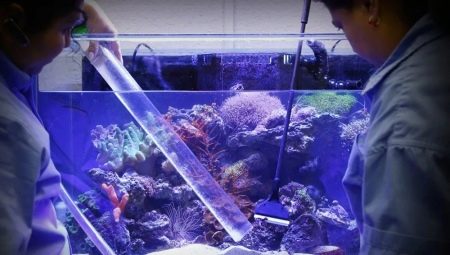Very often in apartments and offices you can see an aquarium with fish, which for a long time have been popular and have become pets of people who do not have much free time.
But the idea that these fish in the aquarium require virtually no care is wrong. In order for its residents to feel comfortable, it is important to monitor the cleanliness of the tank. It is also a guarantee of the long life of the individuals that live in it. In this article we will talk about how to properly and how to sanitize an aquarium.
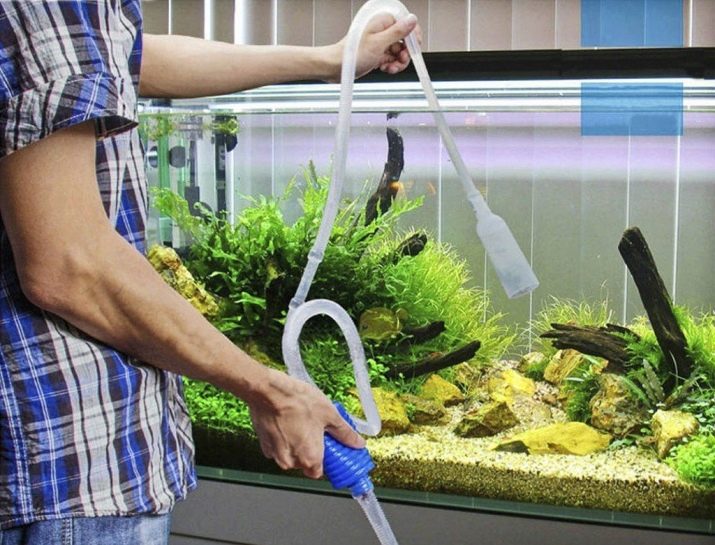
First events
So, there are more than enough reasons to periodically disinfect the aquarium. Before talking about how and when to clean the tank while the fish live in it, let's discuss the need for the first cleaning - disinfection.
As soon as the reservoir was purchased, it must be prepared for colonization by fish - to perform high-quality processing to remove all possible microbes and pathogenic bacteria.
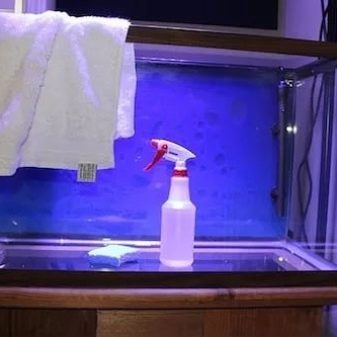

The rules for primary disinfection are quite simple:
- fill the tank with plain water;
- prepare a solution of potassium permanganate (the color should be dark, saturated) and pour it into a tank of water;
- during the day the aquarium should stand filled with this solution - this time is enough to kill all bacteria;
- then you need to pour out the liquid and wipe the aquarium well;
- then the container is washed several times under running water.
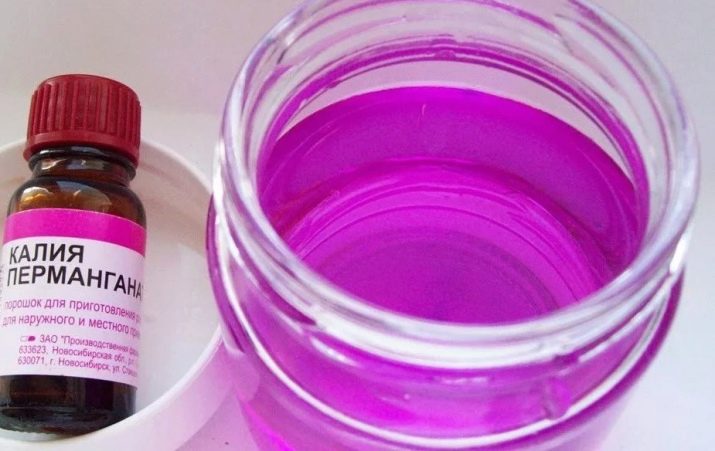
After the aquarium has passed the first disinfection, it can be filled with water to run the inhabitants. But it is worth remembering that it is simply impossible to draw water from the tap and pour into the tank - all chlorine must be removed from it. To do this, it is defended for 3 days, and only after it is poured into the aquarium, and then it settles for several more days. When all of the above activities are completed, you can run fish into the aquarium.
Periodic disinfection
From time to time, it is imperative to clean and disinfect not only the walls and bottom of the aquarium, but also everything that is in it. The main goal is to remove and prevent the appearance of harmful microorganisms from the surfaces of the objects of the tank.
At a time when the aquarium is already functioning, and fish swim in it, you need to carefully monitor the condition of the water, surfaces and the health of its inhabitants.
If there are no diseases, it is enough to periodically change the water and carry out a light disinfection and cleaning about once a year. Full cleaning is carried out once every 4 years.

Disinfection Methods
If a nuisance happened, and you noticed that various bacteria and algae appeared in the tank, then disinfection cannot be avoided. The first step is to "evacuate" the inhabitants and remove all its contents from the aquarium. For the time of the fish, it is necessary to determine in another container, and drain the water.
There are several ways to sanitize an aquarium. Below are the most popular and effective ones that can be done at home.
- Disinfection with boiling water. It is necessary to boil water and fill it with a tank. Pour in gradually so that the glass does not burst from exposure to high temperature. Experts say that all microbes die during such heat treatment.
- Special substances. Special disinfectants purchased at the store can also be used to process the tank. These include chlorine-containing solutions. After their use, the aquarium must be washed very carefully.
- Hydrogen peroxide. She washes the entire aquarium and its contents. Hydrogen peroxide is considered safe, but after using it, the aquarium is also better to rinse.
- Salt. Since it is in every kitchen, applying this method is not at all difficult. It is necessary to prepare the pulp from salt and water, it is good to grease all seams and glass with it. After the container is filled with water and add salt - a teaspoon of salt is needed per liter of water. For 3 hours, the aquarium should stand filled with saline. Then the water is drained, the tank is washed.
- Potassium permanganate. Very often, the aquarium is disinfected with potassium permanganate. To do this, prepare a medium pink solution and thoroughly wash the tank with it. With this solution, you can process not only the aquarium, but also plants and decoration elements.
- UV lamp. This method is considered a mild disinfection. To carry out the treatment with an ultraviolet lamp, it must be placed over the aquarium for several days. For greater efficiency, this method can be combined with one of the above.
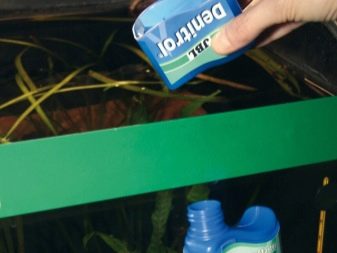
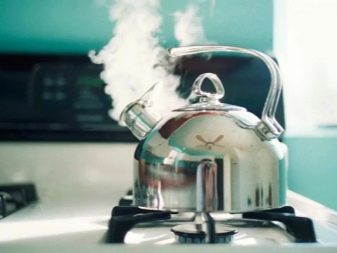
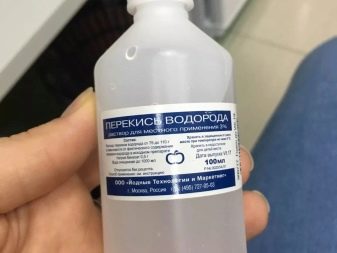
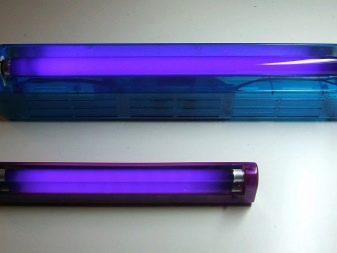
Emergency
Earlier in the article, we talked about the need to carry out both planned disinfection of the aquarium, and mandatory in case of detection of harmful microorganisms. But there are also emergency situations that are associated with the disease and the death of fish. After such sad events, it is very important to properly process. To avoid the possibility of illness of healthy individuals, a total cleaning is required:
- First of all, you need to fill the tank with a disinfectant for at least 24 hours - bleach or whiteness will do;
- all inventory, the decor that was in the tank must be carefully boiled;
- then the aquarium is well washed, dried - for this you can use an ultraviolet lamp.
It should be remembered that after sick and dead fish, disinfection must be very high quality.And if you doubt its implementation at home, it is best to contact a company that provides tank cleaning services.
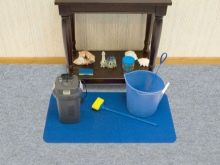
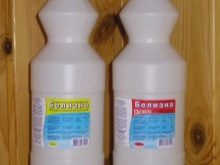
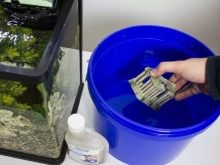
How to disinfect soil
In addition to processing the tank, it is very important to properly disinfect the aquarium soil. In it various organics and microorganisms can well take root and function, the presence of which is detrimental to fish. There are three ways to disinfect:
- boiling;
- special treatment;
- calcination.
The first method involves boiling the soil for 15 minutes. Special preparations for disinfecting soil and aquarium plants can be purchased at the pet store. But the calcination takes place in the oven - the soil must be placed on a baking sheet, and for 15 minutes at a temperature of 180 degrees it should be in the oven.
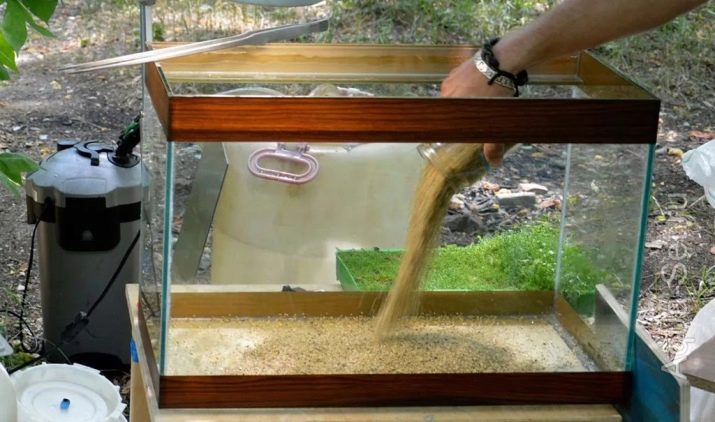
You will learn about disinfection of the aquarium from the video below.
